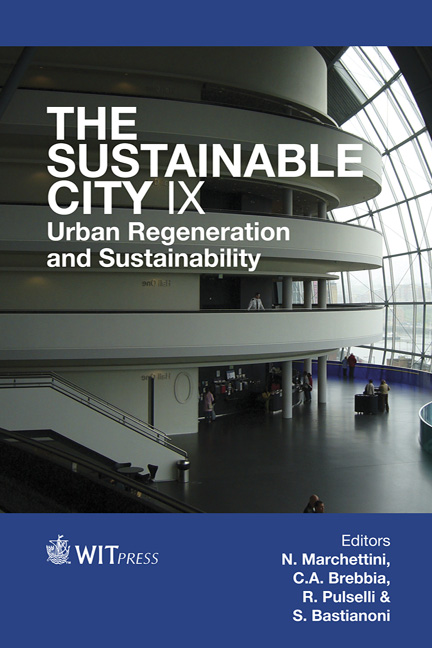Measuring Physical Changes In An Urban Regeneration Scheme
Price
Free (open access)
Transaction
Volume
191
Pages
10
Page Range
1165 - 1174
Published
2014
Size
1,231 kb
Paper DOI
10.2495/SC140982
Copyright
WIT Press
Author(s)
S. Y. Said, S. S. Syed Zubir, M. N. Rahmat
Abstract
Urban regeneration refers to the process of improving the condition of urban quarters, mostly the dilapidated historic areas. The heritage-led urban regeneration induces life into decaying assets and developing the future potential of a neighbourhood. It is a comprehensive and integrated vision and action which leads to the resolution of urban problems and which seeks to bring a lasting improvement into the economic, physical, social and environment condition of an area that has been subject to change. The changes in physical aspect of urban areas represent the impact of the regeneration scheme on the place. Improve condition of historic areas resulting from the conservation work carried out is believed to support the regeneration of the area as a whole. A detailed analysis of the historical context of the built form could provide valuable information of the urban morphology of the place. Townscape evaluation is a quantitative data collection methodology used to assess the physical condition of the urban heritage areas. This method involves a scoring system and has been used to assess the effectiveness of Townscape Heritage Initiatives schemes in the UK. Improvements in socio-cultural indicators in the score sheet have been made and used in the assessment of historic urban characteristics of heritage areas in Malaysia. The result from the assessment serves as a baseline indicators for the condition of the townscape of the heritage areas. The results highlighted the areas that require further improvement, hence to support future regeneration initiatives.
Keywords
regeneration, sustainable, townscape assessment, baseline indicator





